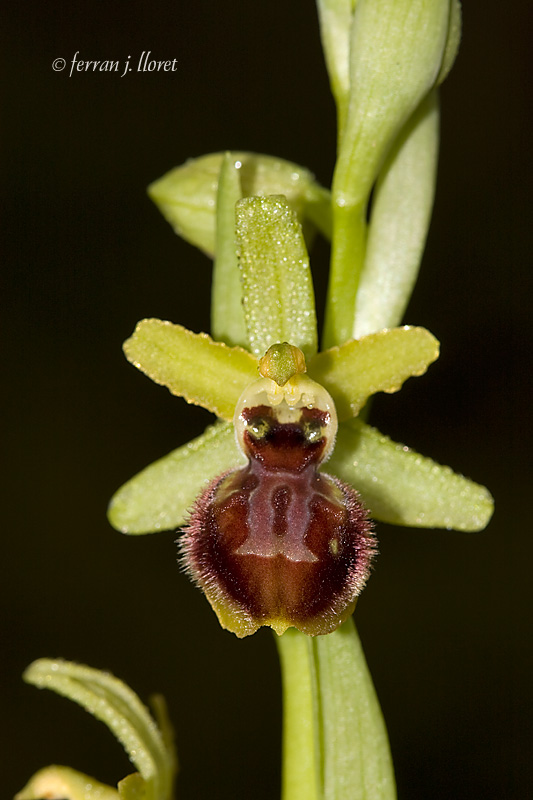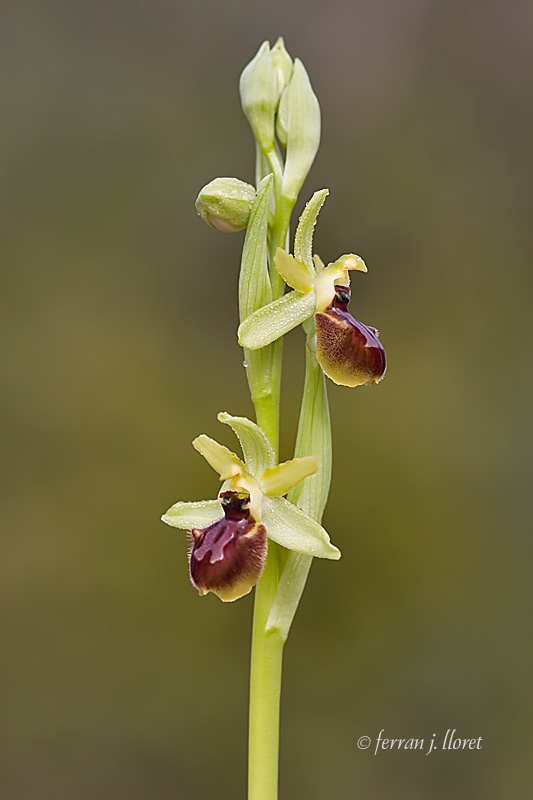Ophrys sphegodes gr.
|
| Ophrys sphegodes Mill. |
| Ophrys incubacea Bianca |
| Ophrys passionis Sennen |
| Ophrys aracchnitiformis Green. & Philippe |
| Ophrys araneola Rchb. |
| Ophrys castellana Devillers-Tersch & Devillers |
| Ophrys riojana C.E. Hermosilla |
 |
Ophrys araneola Rchb. (det. eFlora) |
Flor, prop de Narbona, França, abril de 2008
|
 |
Ophrys araneola Rchb. (det. eFlora) |
Inflorescència, prop de Narbona, França, abril de 2008
|
 |
Ophrys sphegodes Mill. cf. (det. eFlora) |
Alt Empordà, febrer de 2008 |
 |
Ophrys sphegodes Mill. cf. (det. eFlora) |
Alt Empordà, febrer de 2008
|
|
Ophrys arachnitiformis Gren. & Philippe |
Baix Empordà, febrer de 2007
|
La Ophrys arachnitiformis és una microespècie del grup de la Ophrys sphegodes (Ophrys sphegodes Mill. subsp. arachnitiformis (Gren. & Philippe) Sundermann) de distribució basicament mediterrània. A Catalunya aquesta raça té els sèpals de color rosa clar o violaci, al Sud de França dominen les formes amb sèpals de tonalitats verdoses. Habita els herbeis d’anuals i les brolles aclarides. Es força rara. |
